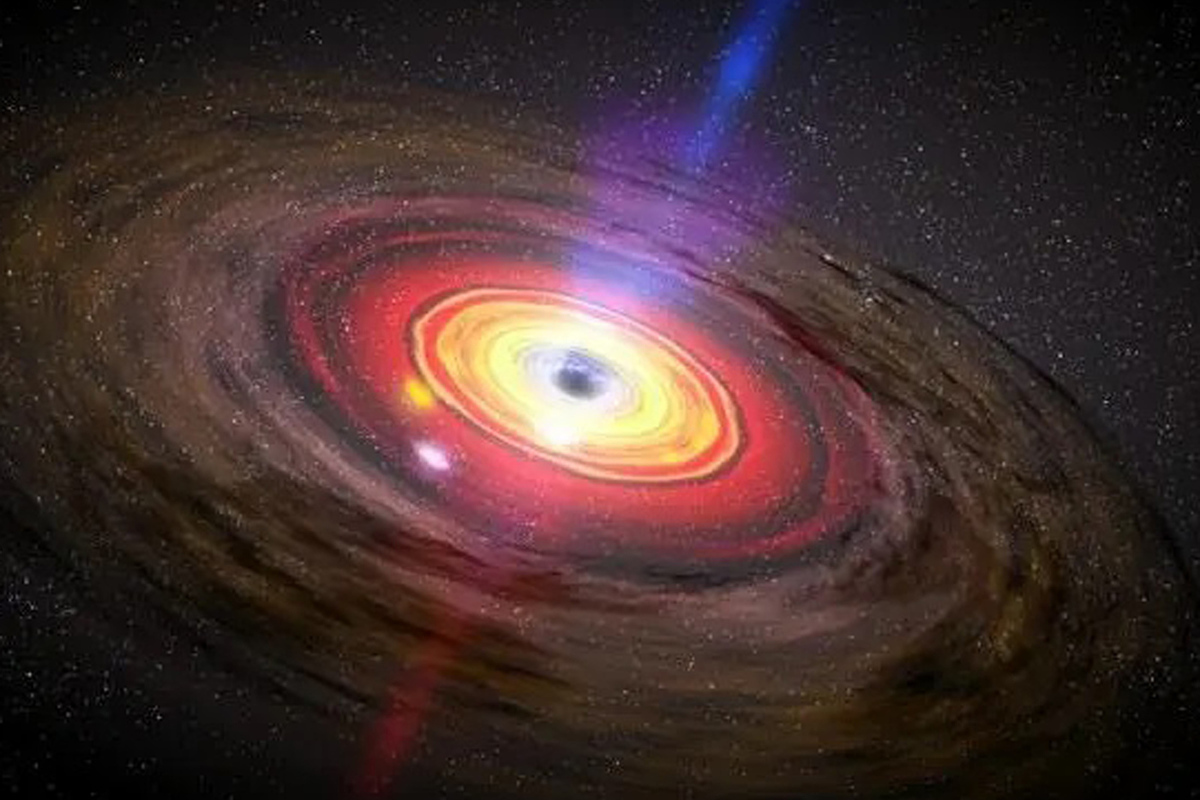Oldest black hole discovered: dating back to the dawn of the universe
[ad_1]

Scientists have discovered the oldest black hole ever observed, dating back to the dawn of the universe. Astronomers are surprised by the size of the 13-billion-year-old object, raising new questions about where black holes come from.
Astronomers have discovered the oldest black hole ever observed, dating back more than 13 billion years since the beginning of the Universe, writes The Guardian.
Observations by the James Webb Space Telescope (JWST) show it to be at the center of the galaxy 440 million years after the big bang. At about a million times the mass of the Sun, it is surprisingly large for a small black hole, raising questions about how it got so big so quickly.
Professor Roberto Maiolino, an astrophysicist at the University of Cambridge who led the observations, said: “The surprise is that it is so massive. This turned out to be the most unexpected thing.”
The observations of the black hole, published on the preprint website Arxiv, do not contain a direct image, which cannot be seen because no light can escape its grip. But astronomers have discovered telltale signs of its accretion disk – a halo of gas and dust that rapidly rotates around the cosmic vortex.
Astronomers believe the earliest black holes could help solve the mystery of how their giant counterparts at the center of galaxies such as the Milky Way grew to mass billions of times that of the Sun. Until recently, it was assumed that they simply snowballed for almost 14 billion years, growing steadily larger through mergers and absorption of stars and other objects. But this snowball scenario cannot fully explain the epic scale of today’s supermassive black holes.
Recent observations of a galaxy called GN-z11 take the mystery back to the infancy of black holes and suggest that they were either born large or inflated extremely quickly in their early stages.
“Understanding where black holes come from has always been a mystery, but now the mystery appears to be deepening,” says Professor Andrew Pontzen, a cosmologist at University College London who was not involved in the study. “These results suggest that some black holes grew at enormous rates in the young Universe, much faster than we expected.”
One explanation, known as the “heavy seed” scenario, is that the early generation of black holes were born from the direct collapse of huge clouds of gas, rather than from burned-out stars that collapsed under their own gravity at the end of their lives. Another possibility is that compact clusters of stars and black holes merged very quickly in the early Universe.
A third, more speculative hypothesis is the existence of so-called primordial black holes that arose during cosmic inflation, a period of expansion of the universe faster than the speed of light that occurred a fraction of a second after the big bang.
This would turn the assumed order of the game on its head, in which galaxies first appeared and then black holes began to grow within them. Primordial black holes would have been effectively woven into the fabric of the cosmos from the very beginning, says The Guardian.
“If this were true, it would have profound implications for the split-second discovery of our Universe,” says Professor Pontzen. “In any case, the story of how black holes and galaxies grew together is a fascinating one, and we are just beginning to piece it together.”
Black holes are some of the strangest and most sinister objects in the Universe. They have such strong gravity that neither matter nor light can escape their grip. The threshold of a black hole is determined by its event horizon, the point of no return. Everything that crosses this border disappears forever, explains The Guardian. They’re difficult to study because they’re fundamentally invisible, but applying the laws of physics provides some bizarre insights. When approaching a black hole, the gravitational gradient can be so strong that objects are stretched in a process known as spaghettification. At the event horizon, gravity is so strong that light bends in a perfect loop around the black hole, meaning that if you stood there, you could see the back of your own head.
What lies beyond the event horizon is unknown. Einstein’s general theory of relativity suggests that at the center of a black hole, the density becomes infinite, creating a gravitational singularity. This gap in spacetime would have no “where” or “when” and would be outside the scope of the normal laws of physics. But it is unclear whether such singularities actually exist.
Black holes come in different sizes. Stellar black holes, formed from the remains of massive stars, can be 20 times more massive than our Sun. Supermassive black holes like Sagittarius A* at the center of the Milky Way could have masses equivalent to millions or billions of suns and play a crucial role in the evolution of the galaxy, writes The Guardian.
Over the past decade, astronomers have made significant advances in observing black holes, with the first image of a halo taken by the Event Horizon telescope in 2019, and observations of catastrophic black hole mergers thanks to the detection of gravitational waves propagating through spacetime.
[ad_2]
Source link








